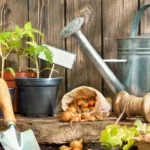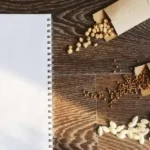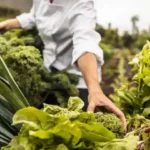Welcome, aspiring growers! Are you eager to discover how to be a good gardener but left feeling overwhelmed as to where to begin? Whether you have a few seasons under your belt or are just starting, there’s always something new to learn and discover about growing your own food.
Gardening is a rewarding and fulfilling activity that beautifies your surroundings and provides many benefits, such as fresh produce, stress relief, exercise, and improved mental health to name a few.
To become a great gardener, there are a few key elements you’ll need to understand, including:
- Choosing a sunny spot
- Understanding soil pH and nutrient levels
- Selecting high-quality seeds or starts
- Obtaining the right garden tools
- Effectively dealing with pests and disease
- Scheduling regular gardening maintenance
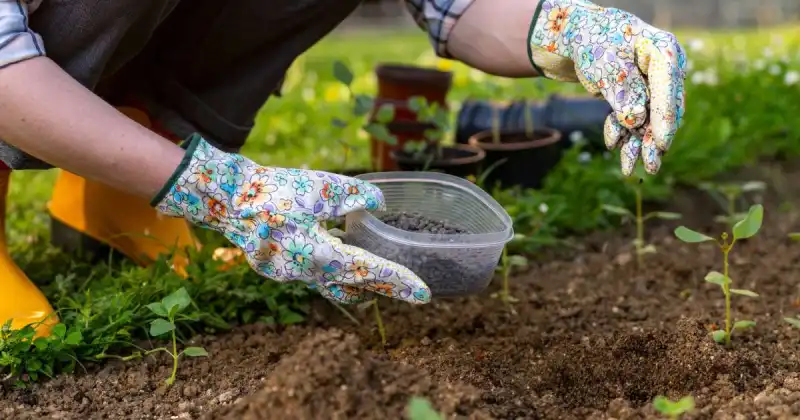
In this article, I will provide all the essential information you need to start creating your green Eden and help you on your way towards success. I will also discuss how to avoid common mistakes and pitfalls and cover crucial gardening tips and practices to help turn you into a practical and productive grower.
From choosing the right plants and soil to regular maintenance and pest control, the tools and knowledge you’ll need are covered here to create a thriving garden. So get your hands dirty and transform your backyard into a lush paradise, one shovel at a time. It’s time to grab your gloves and start on your path to creating a beautiful and prosperous garden.
Humble Highlights
- Save time by learning the 3 most common gardening steps every grower should follow so you can get your space organized and ready for bountiful harvests.
- Save money by mastering these 8 core gardening skills to get your garden off to the best start possible- even if you’re a complete beginner!
- Boost your creativity and hone your gardening prowess by learning the best practices to perform before and after you’ve sown your plants so you can maintain and sustain your garden for years to come.
What Is Gardening: The Benefits Of Working With Nature
Gardening is a practice that involves cultivating and nurturing plants in a designated area, such as a backyard garden. Gardening involves selecting suitable plants or seeds, preparing the soil, planting the seeds or seedlings appropriately, and providing adequate care and general maintenance such as watering, fertilizing, pruning, and pest control.
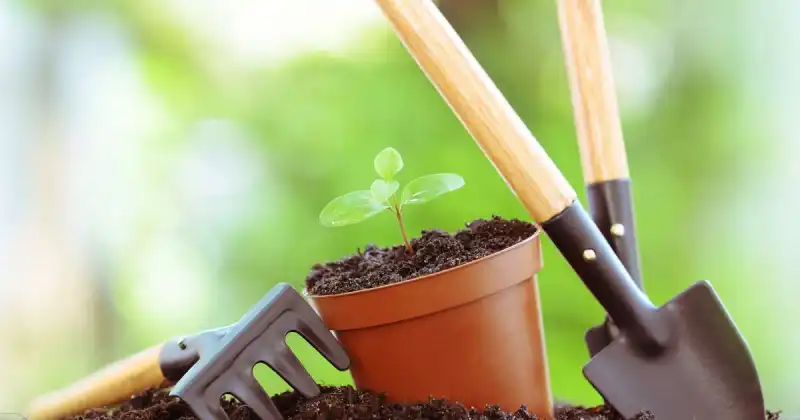
Everyone has a different reason for starting their vegetable oasis, but for most, it’s about being proud and taking ownership of their food independence. There’s just a magical feeling knowing what you put on your plate came right out of the yard through your effort.
However, there are other reasons why people take up this ancient, humble practice. Aside from growing food, flowers, herbs, or ornamental plants, gardening can also be a hobby to enhance the beauty of one’s property. Gardening can range from simple activities, such as planting a few seeds in a pot, to complex tasks, such as designing and maintaining an elaborate garden with various plants. 1
Check out this video I found that details some essential basics you’ll want to keep in mind when starting your first garden. Remember, preparing your garden is only as difficult as you make it.
In addition to the physical and aesthetic benefits gardening offers, it can also be a therapeutic and stress-relieving activity. The practice allows people to connect with nature, enjoy the outdoors, and take a break from the hustle and bustle of daily life. Perhaps most importantly, gardening can provide a sense of accomplishment and satisfaction as plants grow and flourish under one’s care.
Contrary to what some people may say, gardening is not hard. It’s not—seriously. It just takes some practice, dedication, and a will to learn from each experience, good or bad. I’ve been gardening for several years and started without any knowledge. My motivation stemmed from wanting to grow my grub by taking a more hands-on and independent approach to what I was putting into my body. What’s yours?
But ask yourself what can you learn from the experience to be better prepared for next season. Gardening is about learning and patience. It’s about creating a balanced harmony between the plants you grow and Mother Nature. And most importantly, gardening is about bringing you back to your roots, literally and figuratively. As growers, we should embrace challenges, not shy away from them.
How To Get To Know Your Garden
There are three common steps every grower should follow when successfully setting up their garden, including:
- Choosing The Right Site
- Knowing If Your Soil Is Acidic Or Alkaline
- Understanding The Different Seed Varieties
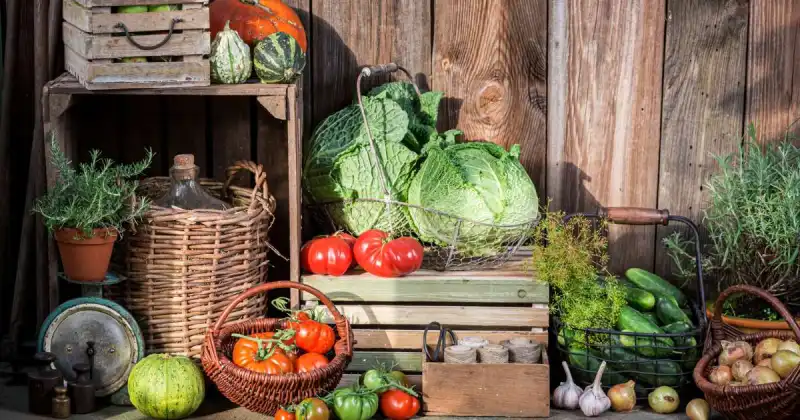
Let’s take a better look at each in a bit more detail.
Choosing The Right Site
Choosing the right location for your garden is absolutely crucial for your plants’ success. Your selected area should receive at least 6 to 8 hours of full sunlight daily, essential to plant growth and overall health. It’s best to ensure your garden is also somewhat protected from wind, which will snap the stems of your budding plants if it gets too intense. Setting up wind barriers or screens in your garden is an excellent idea. You may also consider allowing vining plants to wrap around cages, lattice walls, or trellises to act as windbreakers.
Additionally, soil quality plays a significant role in plant growth, and it’s essential to test the soil’s pH balance and nutrients before planting. Carefully examine if the soil is unsuitable, compacted, or clay-like, and consider adding compost or other organic matter to improve soil fertility, water retention, and drainage.
When selecting a garden location, accessibility is also a key consideration. It should be easy to access for regular maintenance tasks such as watering, weeding, and pruning. Being mindful of potential garden hazards, like flooding, erosion, and shading from trees, should also be considered. 2
Being aware of all these factors helps you choose the ideal location for your garden while ensuring the success and vitality of your plants.
Knowing If Your Soil Is Acidic Or Alkaline
Before planting anything in your garden, you should observe what plants have grown previously in the area. For example, camellias, magnolias, and pieris thrive in acidic soil conditions. Therefore, their presence may indicate the soil’s current pH level is likely acidic. However, the absence of these plants does not necessarily mean your soil is alkaline. Instead, you may need to conduct a soil test to accurately determine the soil’s pH level.
Soil pH is an essential factor in gardening as it can affect the availability of essential nutrients that plants need to grow and develop properly. For instance, plants like blueberries and rhododendrons enjoy more acidic soil conditions, while others, such as lettuce and cabbage, prefer a more alkaline environment.
Good gardening practice comes from experience as well as planning. Whether you’re just starting your garden journey or have several seasons under your belt, learning crucial lessons with every seed you sow is vital to your overall success. This video helps you understand some basic fundamentals while keeping the practice fun and exciting.
To test the pH level of your soil, you can invest in a home soil testing kit or send a sample to a soil testing laboratory. Once you know the pH level, you can amend it accordingly using materials like lime to raise pH levels or sulfur to lower the pH.
By understanding the soil pH and making the necessary adjustments, you can ensure that your plants receive the appropriate nutrients and growing conditions from day one.
Know The Different Seed Varieties
The quality of the food you grow in your garden is significantly influenced by the quality of the seeds you sow. Therefore, it is essential to carefully choose high-quality seeds if you want to produce nutrient-rich and healthy food.
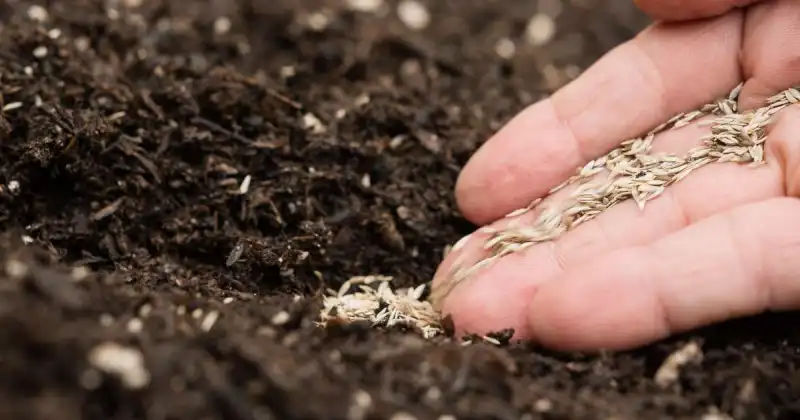
In particular, if you plan to store seeds for future plantings, it is crucial to be extra cautious in selecting them. Not all types of seeds are suitable for seed saving, and some may not even be viable for seed collection. Thus, it is necessary to choose the seeds labeled explicitly as ideal for seed saving to ensure that you produce the best possible crop and preserve it for the future.
By selecting the right seeds and maintaining their quality, you can improve the taste, nutrition, and yield of your crops while ensuring the success of future plantings.
Mastering The Craft Of Gardening: Skillset And Best Practices
Several essential methods and practices help master the art of gardening at home, including:
- Developing (and embracing) Patience
- Planning And Building Your Garden
- Gathering The Right Gardening Tools
- Selecting The Right Plants And Seeds
- Managing Garden Pests And Diseases
- Preparing The Soil For Your Plants
- Keeping Up With Regular Garden Maintenance
- Talking To Fellow Gardeners

Keep in mind that this is not an exhaustive list of techniques. Gardening requires much more, both physically and mentally. But when you are open, honest with yourself, and flexible in the face of inevitable challenges, you become much more experienced and ultimately grow alongside the vegetables you sow.
Let’s dive deeper into these standard practices to help you start your gardening journey on the right leaf.
Developing Patience
As mentioned above, becoming a good gardener requires many essential skills and practices. However, developing patience is one of the most critical skills a gardener should possess. Gardening is typically a slow and steady process, and it takes time for plants to grow, mature, develop, and bear fruit. Therefore, patience is key when waiting for plants to produce.
Patience helps gardeners stay grounded, calm, and collected, even when facing setbacks such as weather conditions or pest infestations. It can take days, weeks, or even months to see the results of your hard work, as you battle these inevitable challenges but the reward is always worth the wait.
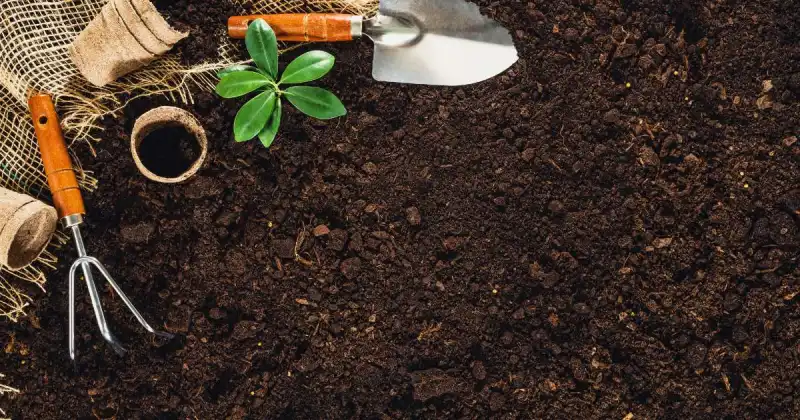
Patience also allows growers to enjoy the process of gardening as they observe the small changes that occur each day. Over time, a patient gardener learns to appreciate the journey rather than just the end result. In addition, patience in gardening can translate to other aspects of life, helping people navigate challenges and remain calm during life’s stressful situations.
Making A Gardening Plan: Building Your Eden
As a good gardener, planning before you start growing is essential. You can ensure that both yourself and your garden will be in a position of strength by taking the time to consider several factors, such as the type of plants you want to grow, soil quality, sunlight, water availability, and regional frost dates.
You may also want to evaluate what you already have regarding space and resources. From tiny urban areas to spacious rural plots, planning helps seasoned and beginner growers make the most of their gardens and avoid unnecessary expenses. 3
Failing to plan and organize my garden was one of my mistakes when I first started. Because I had no experience, I just started doing one thing after another, without giving anything much thought. And boy, did I learn a thing. Because of my irresponsible haste, I wasted good money and time on my haphazard ways.
It’s best to always put some thought into any gardening activity you are about to undertake. Do a bit of research and take notes in a reliable journal. What you write down today may save you time, energy, and and a ton of money down the line.
In addition, deciding on your garden style can help you create a cohesive and aesthetically pleasing outdoor space. For example, will you grow your vegetables in raised beds, a traditional in-ground garden, or containers? Selecting your appropriate garden style beforehand helps you stick to your budget and keeps your focus on what’s most important – growing food.
Finally, planning your garden can be a fun and creative process that allows you to experiment with different layouts and plant combinations and allows the entire family to get involved. With a well-planned garden along with the right resources, you can create a beautiful and flourishing outdoor space that you can enjoy for years to come.
You can also consider joining your local Master Gardener Program, granted through the United States Department of Agriculture. You can check out your local cooperative group in your neck of the woods by selecting your state for more information.
Obtaining The Right Gardening Tools
Obtaining the right gardening tools is crucial for successful gardening. Gardening tools such as shovels, pruners, rakes, and hoses can make your work a lot easier and far more efficient. When selecting tools, it’s essential to consider factors like durability, ergonomic comfort, and ease of use.
For example, if you have a large garden, a wheelbarrow or garden cart can help you transport materials more efficiently and save you tons of time. If you have a smaller garden, hand tools like trowels and cultivators may be sufficient.
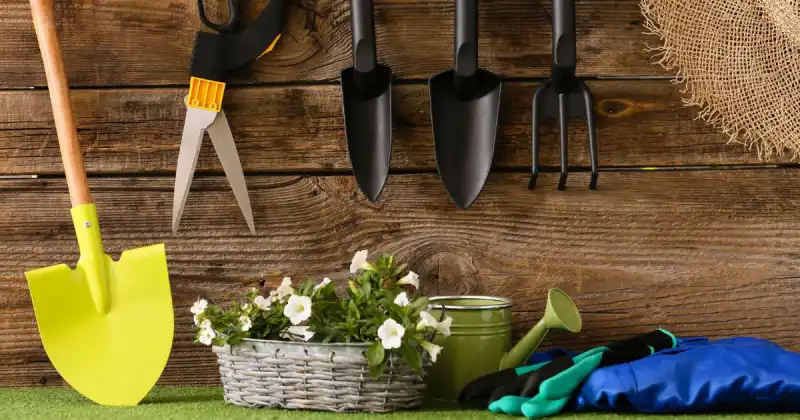
In addition to selecting the right tools, it’s crucial to maintain them properly. Proper care, storage, and maintenance can help extend the life of your tools and ensure they continue to work effectively. Investing in quality gardening tools can prepare you for a successful and enjoyable gardening experience.
Choosing The Right Plants And Seeds
Selecting the right plants and seeds is standard practice for optimal plant health and growth in your garden. You’ll want to choose plants suited to your region’s climate and soil type. Similarly, you’ll want to select plants that require the right amount of sunlight and water that your garden can provide.
When organizing your garden, consider the size of the plants you wish to grow and whether it suits your available space. Look for disease-resistant plants that invite beneficial insects like pollinating bees and butterflies to your garden.
When it comes to seeds, opt for high-quality seeds from reputable suppliers to ensure successful germination. Taking the time to choose the right plants and seeds will pay off in the end, resulting in a thriving and beautiful garden.
Dealing With Garden Pests And Diseases
Dealing with garden pests and diseases is integral to growing your food. It’s also one of the most common challenges of gardening. And it can be testing to keep your plants healthy and prospering when they are under attack.
For example, garden pests like aphids, caterpillars, and slugs can quickly wreak havoc on your garden, causing damage to the foliage and flowers or even killing the plants altogether. Similarly, diseases like powdery mildew, black spot, and blight can affect the health and productivity of your plants and may spread rapidly if not addressed appropriately.
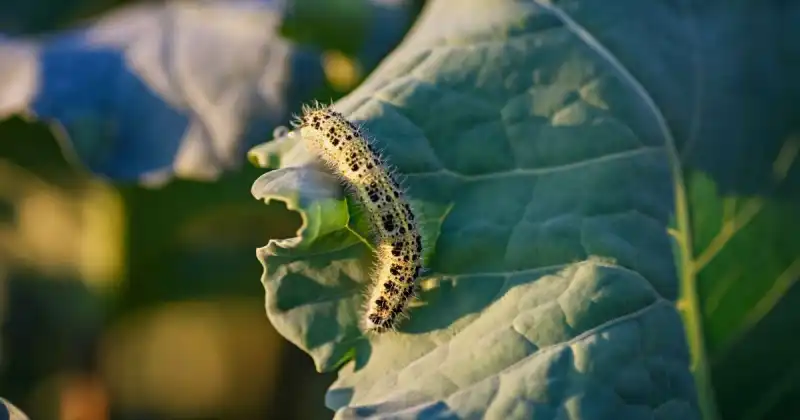
When confronting these inevitable pest and disease issues, promptly identifying and controlling garden pests and diseases is essential. One way to prevent these issues is by using natural predators or biological control methods, such as introducing ladybugs or praying mantises to your garden.
You can also use organic or synthetic pesticides and fungicides as a last resort to control pests and diseases if the problem spirals out of control. However, using them sparingly and only when necessary is essential, as they can harm beneficial insects and pollinators.
Another pest and disease control approach is companion planting, which involves planting specific crops that help deter pests or attract beneficial insects. For example, planting marigolds, nasturtiums, and petunias can help repel pests like aphids and whiteflies. In contrast, planting herbs like basil and dill can attract pollinators and beneficial insects like ladybugs and lacewings.
Flowers and plants such as Borage, butterfly bushes, daisy, coneflower, yarrow, marigold, and black-eyed Susans are all beautiful options that help lure pollinators and predatory insects alike. Even herbs like dill that develop flowers makes an attractive target.
Bees enjoy bright white, blue, and yellow flowers emitting fresh and pleasing aromas. The bright blue flowers of Borage, for example, can help lure plenty of honey bees into your garden.
Preparing The Soil For Your Plants
Soil preparation involves testing and amending the soil to ensure it has the proper pH balance and nutrients for your plants to absorb. Adding organic matter, like compost, can improve soil fertility, water retention, and drainage, all essential for plant growth. 4
In addition to adding organic matter, garden preparation may initially involve the process of tilling to break up compacted soil and create a loose, aerated texture that allows plant roots, oxygen, and water to penetrate.
Removing rocks, weeds, and other debris from the soil can immediately improve soil quality while reducing competition for nutrients among the plants calling your backyard garden home. However, it’s essential to know your soil type and the specific nutrient requirements of the plants you plan to grow to ensure that you amend the soil correctly. That’s why soil testing is so important.
Once you have an established garden, I suggest soil testing once every two to three years and subsequently writing those findings into your trusty garden journal. This way, you can monitor the soil quality and make necessary amendments when necessary.
Regular Maintenance
Regular maintenance is super important to help keep your garden healthy, vibrant, and producing big harvests. But not to worry. Once your garden becomes more established, simple tasks won’t take much of your valuable time so long as you do them routinely.
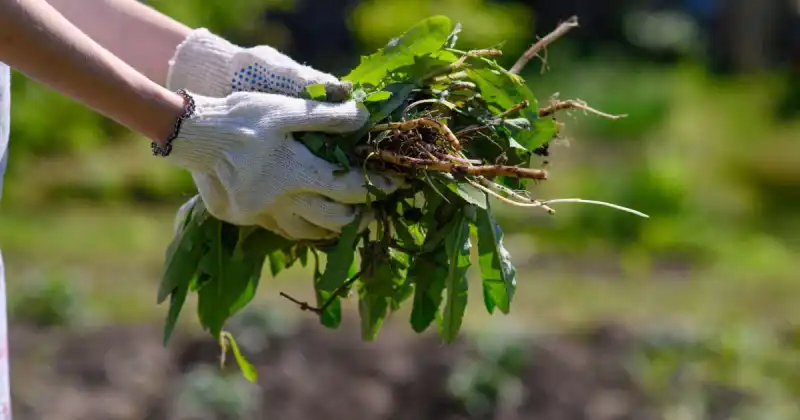
Watering your plants, pulling pesky weeds, pruning to maintain the shape and health of your plants, and fertilizing to provide your crops with the proper nutrients are several activities you’ll need to perform consistently. Just follow the instructions on the fertilizer package to avoid any unnecessary damage to your plants.
With a bit of love and care, your garden will begin to look even better than you imagined. As a result, you’ll have a beautiful and relaxing outdoor space to enjoy that provides abundant food, no less.
Talking To Other Gardeners
Talking to other gardeners is vital for several reasons. Firstly, experienced gardeners can provide valuable advice on avoiding mistakes and dealing with the everyday challenges growers face. In addition, gardeners can share helpful and practical tips on how to grow certain plants successfully.
Conversing with other gardeners can expose you to different gardening techniques and methods you may not have considered before, helping you expand your gardening knowledge and skills. Remember, gardening is an activity of learning. Once you commit to gardening, you’ll become great if you remain a curious student of this humble practice.
Lastly, talking to other gardeners can inspire you to try new things in your space, experiment with different plants and layouts, and motivate you to continue gardening despite any setbacks. In short, joining other aspiring or seasoned gardeners can provide invaluable benefits to novice and experienced gardeners alike. 5
Tips On Becoming A Great Gardener: Before Planting And Factors To Consider
When organizing and planning your garden, there are a few common steps to consider including:
- Finding A Sunny Spot Your Veggies Will Love
- Identifying Your Soil Type
- Understanding Your Region’s Frost Dates
- Planting What’s In Season
- Understanding Planting Depths And Spacing
- Knowing The Difference Between Sun And Shade-Loving Plants
- Mastering When To Harvest

Let’s take a closer look at each of these so you can plan your garden successfully.
Find A Sunny Spot
Choosing the right location for your garden is critical for the success of your plants. If your plants don’t get sun, they won’t grow. It’s that simple.
Most crops require full sun exposure in order to thrive, receiving at least 6 hours of direct light, as it provides them with the necessary energy to carry out photosynthesis. However, some plants may enjoy as much as 8 to 10 hours of unobstructed light to reach their full potential.
Understanding what things to do in the garden is just as important as knowing what to avoid. In gardening, there are no mistakes, only teachable moments. This video below helps point you in the right direction so you can enjoy huge harvests.
Identify Your Soil Type
Creating a healthy garden starts with healthy soil. Period. End of story. Testing your soil’s pH and nutrient levels to get a baseline reading ensures optimal plant growth when you sow your seeds or plant your starts.
You can improve the quality of your soil by adding organic matter like compost or aged manure. Consider creating a compost pile where you can add organic kitchen waste and yard debris to create nutrient-dense humus your plants will love.
Healthy soil is full of beneficial microorganisms that help plants grow, resulting in a bountiful harvest at the end of the season. With healthy soil, you can create a thriving garden and enjoy the fruits of your labor.
Understand Your Region’s Frost Dates
Knowing your region’s average frost dates is critical to planting the right crops at the right time. Frost dates can help you determine when to start seeds indoors, when to transplant seedlings outside, and when to harvest. In addition, by understanding your frost dates, you can avoid planting too early or too late, which can negatively impact your plants’ growth and yield.
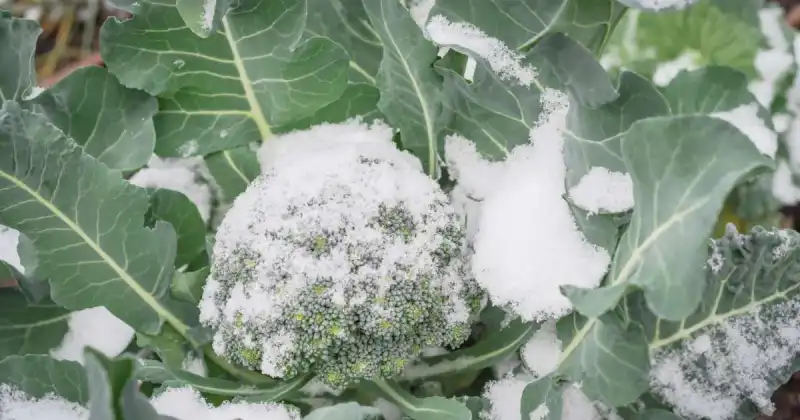
Plant What’s In Season
Planting what’s in season can help ensure that your plants receive the optimal growing conditions. It’s essential to choose plants that are suitable for your region and climate to give them the best chance of development. Planting seasonally appropriate crops can lead to a more successful harvest and prevent wasted resources. 6
List the five most common and popular vegetables your family eats regularly. You can check your refrigerator or look at your last grocery receipt to help give you the answer. Then, see if those vegetables grow well in your climate and region. If they do, you know exactly what you’ll be growing first.
Understand Planting Depths And Spacing
Planting depths and spacing are critical factors in ensuring your plants mature correctly. Each type of plant has different spacing requirements, and it’s important to ensure that you adhere to the correct depth. In addition, proper plant spacing can help reduce competition for valuable soil resources and prevent overcrowding, helping to avoid poor growth and disease.

Know The Difference Between Sun And Shade-Loving Plants
Choosing plants suitable for the right amount of sunlight your garden receives is essential. Some plants require full sun exposure, while others may tolerate partial shade.
Placing plants in areas with inadequate sunlight can negatively affect their growth and overall yield. Using specific apps like Sun Seeker, which make tracking the sun’s path easy, can help determine the best location for your plants, resulting in a healthier, more productive garden.
Know When To Harvest
Knowing when to harvest your crops ensures you get the best flavor and quality. Because different crops have different harvesting times, it’s essential to understand the correct times to collect your food. Harvesting too early can result in underdeveloped produce, while harvesting too late can lead to overripe, bitter-tasting, or spoiled crops. What’s more, the timing of the harvest can also impact the nutritional value of the produce. 7
In addition by using visual cues like color and size, you can use tools like refractometers and Brix meters to determine the sweetness and ripeness of your fruits and vegetables. Then, by harvesting at the right time, you can enjoy your homegrown produce’s full flavor and nutritional benefits.
After Planting: Care And Maintenance Of Plants
Aftercare maintenance of your vegetables helps determine whether you’ll have a successful harvest. Adding organic compost before your first planting in the spring and again after your last harvest in the fall are the best times to add nutrient density to your soil. Likewise, regular watering and fertilizing help keep your plant’s immune system healthy and robust throughout its lifecycle.
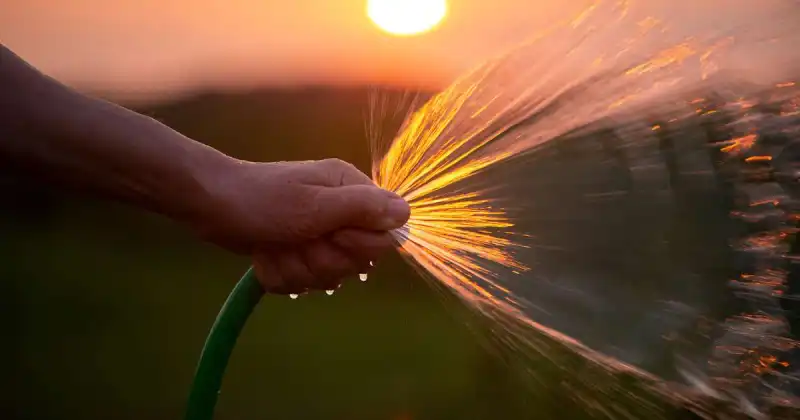
Use Compost And Mulch
Composting is an excellent way to create nutrient-rich soil amendments for your garden. Adding compost and mulch to your space can help improve soil fertility, water retention, and drainage. Mulching can also help reduce weed growth, moderate soil temperatures, and protect bare soil from erosion and compaction, especially over the winter months when your garden lies dormant.
Not only is this practice sustainable, but it’s also environmentally friendly and eliminates nearly 30% of the average household’s waste. Is space an issue because you’re an urban grower? Fortunately, you can even compost in the city with practical and compact compost tumblers, providing your plants with a healthier, more productive upbringing.
Water And Fertilize Regularly
Water and fertilization are essential to keep plants healthy. Because each plant has unique needs, it’s important to know how to accommodate each.
Many growers believe watering a few minutes each day is enough. However, it may not be if the crops you grow develop deeper-rooted systems, like winter squash, tomatoes, watermelons, and sweet potatoes.
Therefore, I suggest watering deeper and longer once or twice weekly. Not only will you save some valuable time, but you’ll also encourage your plants to become more robust while allowing your vegetation to become more independent as these same roots search for moisture deeper in the ground.
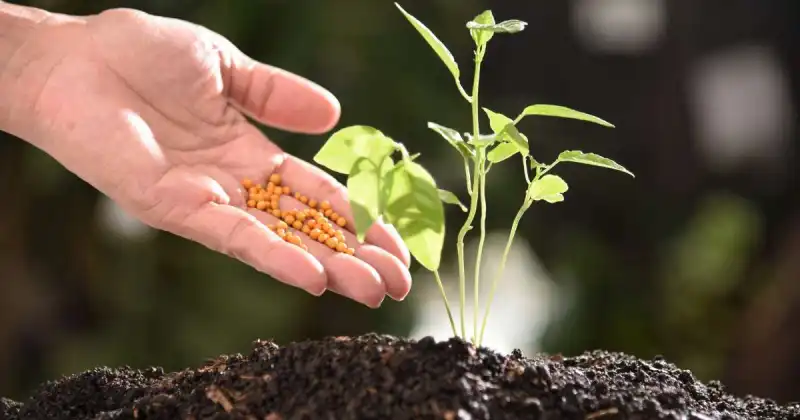
While it’s true that young gardens require adequate moisture, you can also consider using fan sprinklers or drip irrigation systems that are easy to set up and can efficiently water your crops.
Selecting the right fertilizer is just as crucial. Careful research and following the label’s instructions can help you make informed choices and find the perfect fit. Remember, natural and chemical fertilizers have differences (and consequences), and diligently reading instructions and measuring the garden’s square footage can prevent over-fertilization.
Creating Room To Grow
Once you have a season or two under your belt, you can start learning some advanced techniques to advance your green thumb. Every gardener I’ve spoken to wants to experiment with different vegetables and new methods to enhance their garden’s design at some point in their journey. 8
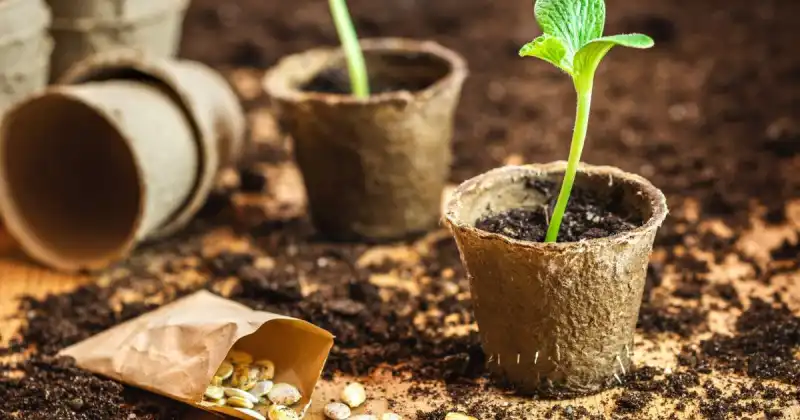
You may expand your growing area if you have the space available. But remember, even if space is limited, you can experiment in other ways, including planting different vegetables, vertical gardening, and even trying new concepts like microgreens and sprouts.
Remember, the sky is the limit as to what you can accomplish. However, enjoying the freedom from this pastime and relishing in each unique challenge ultimately helps shape each gardener, making good growers great from experience. 9
Conclusion
Gardening is a beautiful and rewarding activity that can bring joy and fulfillment to your life. By following these helpful tips, methods, and practices, you can become a successful and skilled grower, producing beautiful and bountiful harvests.
When starting your garden, choose a site that receives plenty of sunlight, test your soil pH, and understand and inspect the different seed varieties you’ll be planting.
Likewise, to achieve consistent success, core gardening practices include developing patience, gathering the right garden tools for you, managing pests and diseases adequately, and keeping up with regular maintenance.
Backyard gardening can also be a great way to connect with nature and the environment, promoting sustainable and eco-friendly practices, like composting. So, what are you waiting for? Get your gardening gloves on, grab your tools, and create your little green paradise.
How did you master the humble art of gardening? I’m curious to know. Meet me in the comments below and tell me what started your gardening journey.
SOURCES
- National Library Of Medicine, National Center For Biotechnology Information – Gardening For Health: A Regular Dose Of Gardening
- United States Fish & Wildlife Service – Attracting Pollinators To Your Garden
- United States Environmental Protection Agency – Composting
- Oregon State University, Extension Service – Living On The Land: Managing Soil pH
- University Of Minnesota, Extension – Master Gardeners Make A Difference In Your Community
- West Virginia University, Extension – Succession Planting
- Wikipedia – Pieris (Plant)
- Oregon State University, Extension – Encouraging Beneficial Insects In Your Garden
- University Of Illinois Urbana-Champaign, College Of Agricultural, Consumer & Environmental Sciences – New Vegetable Garden Maintenance – Weed And Watering


